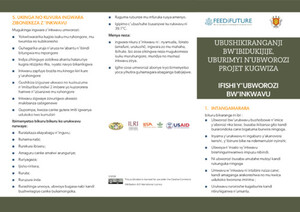
Studies on the growth performance of native chicken ecotypes and RIR chicken under improved management system in northwest Ethiopia
Abstract
A study was conducted to evaluate the growth performance of native and RIR chickens under intensive management condition for 22 weeks using a standard commercial ration. Seven native chicken populations were collected from representative administrative zones in northwest Ethiopia. The experimental layout was a Completely Randomized Design (CRD) with three replications. Data on feed consumption, body weight and related parameters were collected up to the age of 22 weeks. The mean total feed intake for the seven native chicken ecotypes and RIR chicken lines at the end of their growth phase were 13.80, 15.16, 13.44, 13.25, 13.81, 13.36, 14.11 and 12.83 kg for the native chicken types named as Tilili, Gellilia, Debre-Ellias, Mello-Hamusit, Gassay, Guangua, Mecha and RIR, respectively. There was no significant difference in feed consumption among the tested chicken ecotypes. However, a significant (p<0.05) difference was observed in average body weight and body weight gain between the different lines. The average body weights for Tilili , Gellilia, Debre-Ellias, Mello-Hamusit, Gassay, Guangua, Mecha and RIR were 1191, 1186, 1054, 1222, 1038, 1249, 1257 and 1394 g respectively. The lowest and highest mean mature body weight at the age of 22 weeks were 1038 g for Gassay and 1257g for Mecha native chicken lines, respectively. Besides, the average mature body weight for Tilili, Gellilia, Debre-Ellias, Mello-Hamusit, Gassay, Guangua, Mecha and RIR was 1191, 1186, 1054, 1222, 1038, 1249, 1257 and 1394 g and their mean daily body weight growth rates were 7.6, 7.5, 6.7, 7.8, 6.6, 7.9, 8.0 and 8.8 g per bird, respectively. The native chicken lines named as Mello-Hamusit, Guangua and Mecha were the fastest growers among the native chicken lines. Mortality from hatching to end of the growth period i.e. at maturity was higher for all the native and RIR chickens used under intensive management condition.
Citation
Livestock Research for Rural Development;18(6): 76










